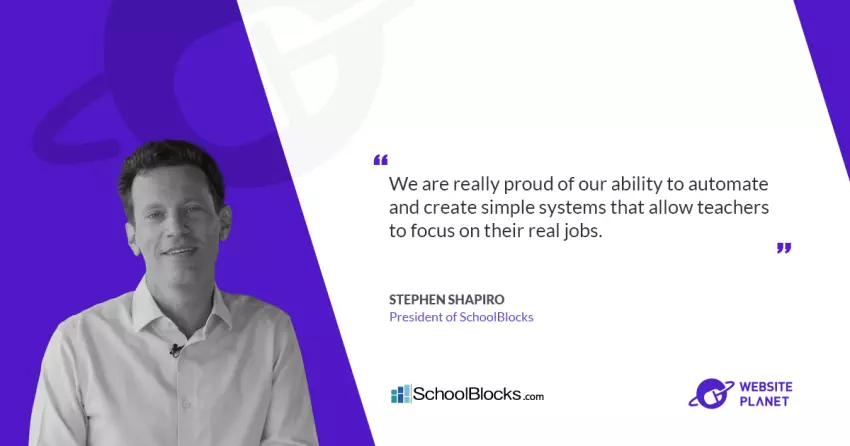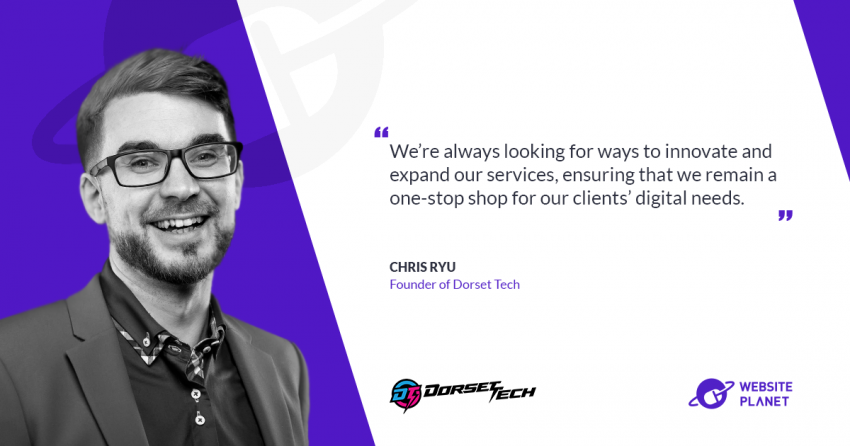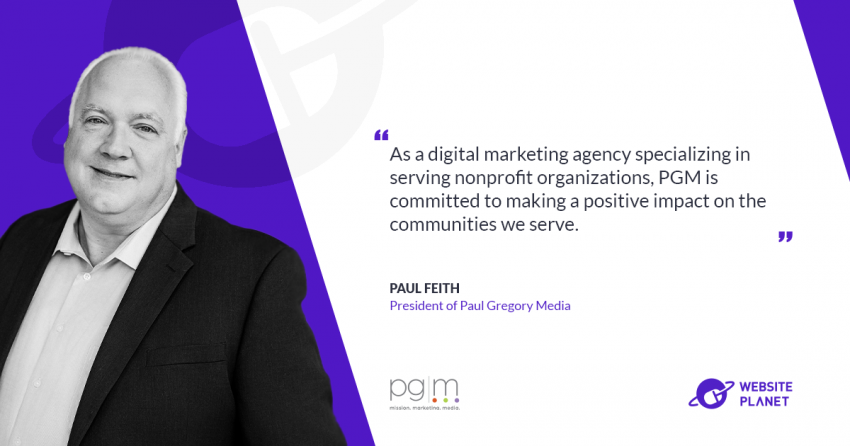Over 1200 schools use SchoolBlocks. With integrations with Google and Microsoft Office and a competitive price, it’s easy to start explaining the success of the product. To know more details about it and how technology can help with education we talked with Stephen Shapiro, President of SchoolBlocks.com. Check out the interview for
Website Planet’s blog below!
Please present SchoolBlocks to our audience.
SchoolBlocks is a website content management system built specifically for the needs of schools. When you’re building for the needs of schools, there are many factors to take into account, which services like Weebly, Wix and Squarespace do not.
Factors like the permission tree structure of multiple organizations, from district to school, to classroom, coach, team, group, department… All those permission structures have different rules in the content authoring steps that a school district needs to take.
In addition to that, a school’s priorities are different than a small business’. A school needs highly efficient content management system practice because they are understaffed. So the website needs to achieve a simplicity that others don’t aspire to achieve. SchoolBlocks takes ‘simplicity’ to another level, unseen by anyone else in the world, which is largely achieved through integration with 3rd party authoring tools such as Google and Microsoft Office.
Unlike others, who sometimes bring in some content from Google, we take it to the next level by seeing Google as the primary author-offering platform, causing our job to be more of a publishing platform. This approach allows webmasters to not really learn new things: often they already know how to use Google’s tools and, in so doing, have accidentally become proficient at webmastering if their platform is SchoolBlocks.
What are the most common challenges that schools present when searching for a solution?
I was the founder and president of SchoolFusion, which was the first ever smart website system. I ran that company for 10 years and sold it to Providence Equity Partners then reentered the space with what I felt was a more appropriate solution that required even less expertise from the webmaster and therefore enabled the school to distribute the job of content management with ease.
Deciphering truth from fiction when communicating with a salesperson is a difficult task set upon the shoulders of district decision makers. The district must find something that fits within their staff’s capacity to partake in the solution. I think the best way to evaluate is to watch an untrained person get started with the product without training or assistance. If that person finds some success, you can be confident that the product will stand the test of time and will continue to be beneficial even through future staff shortages.
They all know that the more involved the parent, the higher the achieving student. So, they are focused on trying to create or find solutions, through the communication side of edtech, that meet their capacity from a staff perspective and that maximizes parental involvement.
That decision also takes into account their demographic, such as how often English is taught as a second language and other factors that could cause parents to need different types of solutions, from mobile apps to desktop platforms, SMS and voice calling. All that comes into the decision architecture that a district has to face when making a decision.
How do you reach schools? Or do they reach you?
It’s half and half. I can say with confidence that our clients love us and often refer to us in their own conversations. The other half is classic marketing, asking for a moment of a district’s time to personally show them our solution. We do everything from magazine ads to conferences, to facilitating word of mouth.
Besides SchoolBlocks, in what aspects do you believe technology can help in the school system?
First and foremost, technology needs to get out of the teachers’ way! The best technology is the one that does not require a teacher’s time. We focus on technology not as a solution, but as a way to remove burden, so that the teacher can focus on their job. As an industry, we need to trust our teachers as they are our primary and best resource.
There’s nothing better than face-to-face, no technology beats that. We are very good at making it so that technology isn’t a burden and a time suck for those teachers – but also for the principals, and superintendents, secretaries and librarians. They must all have platforms which make them feel that technology is not a burden, and can focus their energy on teaching and connecting.
We are really proud of our ability to get technology out of the way, which is a bit funny to hear coming from an EdTech company. But we are really proud of our ability to automate and create simple systems that allow teachers to focus on their real jobs.
So, you don’t see technology as a complete disruptor, but as a smart complement to the professionals?
As long as the kid is in front of the screen, their learning capacity is limited. There is no technology answer as a disruptor when it comes to kids and learning. We, Homo sapiens, have been storytellers for tens of thousands of years. We focus on face expressions, lips, eyes and none of that is achieved in a screen nearly as well as face to face. If you really want to break through into a child’s mind, technology should be very low on the totem pole of options.
How do you see your client base? Does it concentrate on a specific area or age spectrum?
Our client base is sprinkled all the way throughout the United States with some traction appearing internationally. There are certain states in the U.S. in which we are more successful and often those are the states representing districts who are more entrepreneurial-minded, staffed by aggressive superintendents looking to reshape their districts rather than keep the status quo.
Our solution is so progressive and far ahead of our competitors in the way we see the duties of a website that a lot of times the brick-and-mortar old viewpoints of a superintendent are not hitting the mark for us.
Do you believe your solution can reach outside the US?
We just finished a giant internationalization feature set in our system and hope for that to be the starting point for more global reach. The US is an easy place to start because the budgets to create a sustainable business are there, but the truth is our product is probably highly appropriate due to its efficiency in staffing from a global perspective. So, we really intend to approach the global opportunity with gusto in the coming years.
Where first? Perhaps Canada and Europe?
Central and South America. Canada and Europe are attractive but we think the true opportunity to shape and influence and make a positive impact is in Central and South America locations first. Potentially, parts of Africa secondly.
Besides internationalization, what are SchoolBlocks’ plans for the future?
My personal passions are more centered on helping schools rid themselves of the perils of social media. Any school that is posting their news and events on Facebook and Twitter is creating a detriment to their learning environment.
They are creating polarization in their community, more aggressive parents, kids that are highly distracted from their schoolwork. Also, they are condoning the usage of tools that are causing harm and making it harder for them to achieve their own goals.
Do you have examples of the bad use of social media by schools?
By our calculations, 80% of schools post news and events on social media platforms. Any post should be considered ‘bad’ since any post pushes parents into those platforms. The higher the penetration of social media, the higher the teenage suicide rates as well as countless other negative impacts such as bullying and polarization. If you look at any of the movies like “The Social Dilemma” and research from the Center for Humane Technology, they have incredible stats and data associated with the harms of social media and how it creates polarization, how it enables bullies.
Wherever the usage of social media is high, you have a fracturing of the fabric of society. These social media platforms are highly dangerous and are essentially cannibalizing the content of the school to force parents to be on their platforms! And are profiting off of this content and their algorithms clearly cause distraction.
That is the top of the barrel. The bottom of the barrel is much more severe. Polarization, causing parents to feel very strongly that districts and schools are doing things wrong. Incitement is what causes engagement, so the algorithms cause parents to become incited.
You’ve seen positive things in social media as well, such as people standing up to autocracies. But, at the same time, they are becoming extremists in many issues that are at odds with a successful learning environment, which requires support of loving parents.















